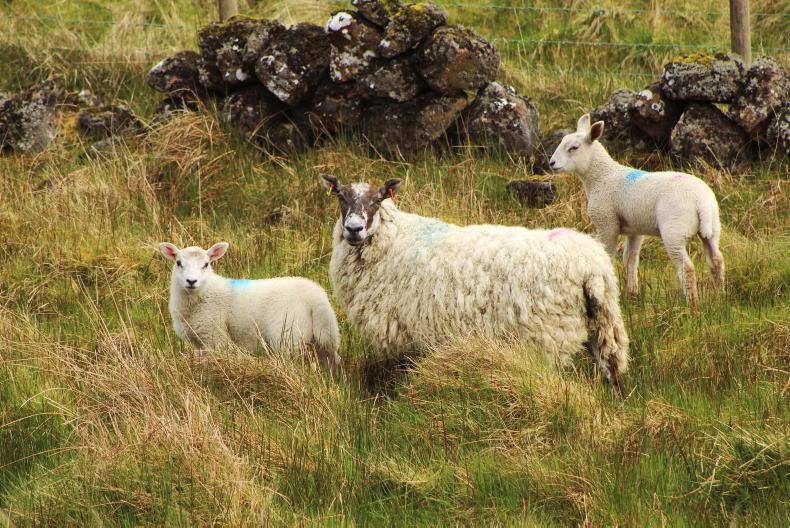Hill flock breeding strategies: Breeding is some way off for most hill flocks and now is the time to review your breeding policy to consider if it is the optimum fit for your farm.
Crossbreeding is frequently mentioned as offering scope to increase the value of output, but a caveat to this is that demand for Scottish Blackface and Cheviot has risen in recent years on the back of crossbreeding and in doing so, is presenting opportunities for pure-breeding flocks to sell surplus female replacements.
For some farmers operating on the hardest hills, the option of crossbreeding is not a runner, with these flocks concentrating on producing enough replacements to regenerate the flock.
In this regard, the level of output in a flock is the starting point in determining if crossbreeding is an option.
As reflected in Table 1, where the number of lambs reared is relatively low at 0.8 lambs per ewe joined, the focus will remain on pure breeding to be in a position to replenish the flock.
In contrast, where the number of lambs reared is in the region of 1.10 lambs per ewe joined, it provides much more scope to implement a crossbreeding programme if desired. The Teagasc guidelines are based on a hill flock with a replacement rate of about 24%, while also allowing for 10% of any potential ewe lambs to be deemed unsuitable.
The focus of the breeding policy should also take into account breeding the type of ewe and progeny that can excel in the terrain in which they are run. There is a temptation to incorporate genetics into the flock that will enhance certain characteristics in progeny, but longer-term this may not be the best fit in producing sheep that are capable of excelling in the terrain in which they are run.
The level of output in a hill flock can be directly influenced by ewe body condition and liveweight, and now is also the time to address this. Teagasc research has shown a very strong association between the liveweight of Scottish Blackface ewes at mating and subsequent litter size (increasing from BCS 2 to 3 lifted the lambing percentage by 13.5%).
Findings from the Teagasc BETTER Farm sheep programme show a difference in pregnancy rate of over 10% between ewes at a condition score of 2 and mating and those at the desired condition score of 3. It also resulted in a five day shorter lambing spread, with ewes falling below optimum body condition generally cycling later.
In terms of liveweight, for ewes on semi-improved hills, experience from the Better Farm Programme points to a target liveweight of close to 50kg-55kg and higher for ewes run on relatively good-quality hills, while for ewes on harder hills, this reduces to in the region of 45kg liveweight.






 This is a subscriber-only article
This is a subscriber-only article










SHARING OPTIONS: